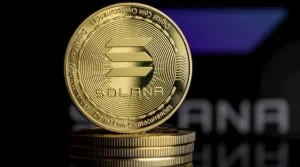Texas Governor Greg Abbott is looking forward to reviewing a bill that would allow the state to create a strategic Bitcoin reserve.
In a statement to Crypto Intelligence News, Andrew Mahaleris, press secretary for Governor Abbott, said: “Already the home of crypto mining, this session Texas should become the crypto capital.
“Governor Abbott looks forward to reviewing any proposal to create a Bitcoin reserve that the Texas Legislature brings forth,” he added.
Texas is one of around two-dozen US states that have proposed legislation that would allow them to invest state funds in Bitcoin.
Senate Bill 21 (SB 21), introduced by State Senator Charles Schwertner, proposes the creation of the Texas Strategic Bitcoin Reserve, aiming to diversify the state’s investment portfolio and hedge against economic volatility.
The bill outlines that the reserve would be managed by the Texas Comptroller of Public Accounts, granting the authority to acquire, sell, and manage Bitcoin and potentially other high-market-cap cryptocurrencies.
Funding for the reserve is proposed to come from legislative appropriations, dedicated revenue sources, private donations, and cryptocurrency holdings accumulated through various means.
On February 27, 2025, SB 21 passed the Texas Senate Banking Committee with a unanimous 9–0 vote, propelling the bill to the Senate floor for further deliberation.
If the bill is passed by the Senate, it would subsequently require Governor Greg Abbott’s signature to become law.
Proponents argue that Bitcoin, often referred to as “digital gold,” could serve as a hedge against inflation and economic downturns, similar to traditional gold reserves.
Texas is well on course to launching its Bitcoin reserve, but some other states, such as Utah, are closer to passing their own respective Bitcoin reserve bill.
As of February 27, 2025, Bitcoin (BTC) has experienced a significant downturn, with its price declining by 10% over the past week and 3% in the last 24 hours. This downward movement has prompted analysts to assess potential support levels and the likelihood of further declines.
The Significance of CME Gaps in Bitcoin’s Price Movement
One focal point in the current analysis is the Chicago Mercantile Exchange (CME) Bitcoin futures market. Unlike the continuous trading in spot markets, CME futures operate during specific hours, leading to “gaps” during closures on weekends and holidays. Historically, these gaps have often been filled, meaning Bitcoin’s price tends to revisit these levels over time.
Currently, there’s an unfilled CME gap between approximately $77,930 and $80,670, resulting from a rapid price movement in November 2024. This gap aligns closely with Bitcoin’s 200-day exponential moving average (EMA) at $79,500, suggesting a strong support zone. Technical analysts posit that Bitcoin may need to revisit this area to establish a foundation for any sustained upward momentum.
Analyst Perspectives on Potential Support Levels
Market analysts have identified several key support levels to monitor:
- $77,000 CME Gap Zone: Filling this gap could serve as an initial support level.
- $72,000 Support Zone: Established during the November 2024 rally, this level could act as a secondary support.
- $65,000 and $58,000-$60,000 Zones: These areas represent deeper support levels, with the latter being a significant demand zone.
Michael van de Poppe, founder of MN Capital, highlighted the importance of these levels, noting that a failure to hold above the CME gap could lead to a retest of the March 2024 highs around $73,000.
Market Sentiment and Future Implications
The current market sentiment reflects caution, with significant liquidity observed in the lower $70,000 range. While historical patterns suggest that filling CME gaps is a common occurrence, it’s essential to consider broader market factors, including macroeconomic conditions and investor sentiment, which can influence price movements.
In conclusion, while Bitcoin’s recent decline has brought critical support levels into focus, traders and investors should conduct thorough research and consider multiple factors before making decisions, as the cryptocurrency market remains inherently volatile.
Core Scientific, a prominent Bitcoin mining company, has recently unveiled plans for a $1.2 billion data center expansion in collaboration with artificial intelligence (AI) startup CoreWeave. This announcement comes on the heels of the company’s fourth-quarter 2024 financial report, which disclosed a net loss of $265.5 million.
Financial Overview and Underlying Factors
In its Q4 2024 earnings report, Core Scientific attributed the substantial net loss primarily to a $224.7 million non-cash adjustment related to warrants and other contingent liabilities. This accounting adjustment was necessitated by a significant year-over-year increase in the company’s stock price, impacting the valuation of its financial obligations. Despite the reported loss, it’s important to note that this figure does not represent actual cash outflows.
Strategic Expansion into High-Performance Computing
Amid these financial challenges, Core Scientific is strategically diversifying its operations by expanding into the high-performance computing (HPC) sector, specifically targeting AI workloads. The partnership with CoreWeave aims to develop a state-of-the-art data center in Texas, projected to generate $1.2 billion in contracted revenue. This move positions Core Scientific to capitalize on the burgeoning demand for energy-intensive, application-specific data centers tailored for advanced AI applications.
CEO Adam Sullivan expressed enthusiasm about the deepening collaboration with CoreWeave, stating, “We are thrilled to deepen our relationship with CoreWeave as we continue developing large-scale HPC projects that power advanced AI and other low-latency workloads.”
Projected Long-Term Revenue and Market Positioning
Beyond the immediate project, Core Scientific anticipates that its alliance with CoreWeave could yield over $10 billion in cumulative revenue. This optimistic projection underscores the company’s commitment to evolving beyond traditional cryptocurrency mining and establishing a significant presence in the AI and HPC infrastructure sectors.
Industry-Wide Shift Among Bitcoin Miners
Core Scientific’s strategic pivot reflects a broader trend among cryptocurrency mining firms exploring opportunities in AI hosting and HPC services. Companies such as Hive Digital, Hut 8, and Iris Energy have already integrated AI and HPC into their operations, recognizing the potential for diversified revenue streams. This industry-wide shift is driven by the increasing convergence of blockchain technologies and AI, offering mining companies avenues to leverage their existing infrastructure for emerging technological demands.
Market Response and Future Outlook
Following the announcement of the data center expansion, Core Scientific’s stock experienced a 12.29% uptick in after-hours trading, indicating positive investor sentiment toward the company’s strategic direction. As the AI sector continues to expand, Core Scientific’s investments in HPC infrastructure position it to meet the growing computational needs of AI applications, potentially leading to improved financial performance in the coming years.
As of February 27, 2025, BlackRock’s iShares Bitcoin Trust (IBIT) has experienced unprecedented investor withdrawals, with $420 million exiting the fund in a single day. This significant outflow coincides with Bitcoin’s price reaching yearly lows, intensifying concerns within the cryptocurrency investment community.
Record-Breaking Single-Day Withdrawal
On February 26, IBIT saw an outflow of 5,000 BTC, marking its largest single-day withdrawal since its inception in 2024. This event surpassed the previous record set on January 2, when $332 million was withdrawn. The recent outflow is part of a seven-day streak, during which nearly $3 billion has been pulled from cryptocurrency investment products.
Industry-Wide Impact
The trend isn’t isolated to BlackRock. Fidelity’s Wise Origin Bitcoin Fund (FBTC) also reported a seven-day outflow streak, with an additional $145.7 million withdrawn on February 26. Other major funds, including those managed by Bitwise, Ark 21Shares, Invesco, Franklin, WisdomTree, and Grayscale, have experienced outflows ranging from $10 million to $60 million.
Market Analysts’ Perspectives
Despite the substantial withdrawals, some industry experts view this as a temporary fluctuation. Nate Geraci, President of ETF Store, described the event as a “shorter-term blip.” Similarly, CryptoQuant’s CEO, Ki Young Ju, cautioned against panic selling, emphasizing that a 30% correction is typical in a Bitcoin bull cycle, referencing a 53% drop in 2021 followed by a recovery to an all-time high.
Hedge Funds and Arbitrage Opportunities
Analysts such as BitMEX co-founder Arthur Hayes and 10x Research’s head of research Markus Thielen suggest that the majority of Bitcoin ETF investors are hedge funds seeking arbitrage opportunities rather than long-term holdings. As these opportunities diminish, these funds are unwinding their positions, contributing to the current outflow trend.
Bitcoin’s Price Performance
The cryptocurrency market has been under pressure, with total capitalization falling by 5.6% in a single day to $2.9 trillion. Bitcoin’s price dropped to a low of $82,455 on February 26, marking a 25% correction since its all-time high on December 17. As of now, Bitcoin is trading at $86,467, reflecting a 2.46% decrease from the previous close.
Investor Sentiment and Future Outlook
While the recent outflows and price declines have raised concerns, seasoned investors recognize that such volatility is inherent in the cryptocurrency market. Historical patterns indicate that significant corrections can precede substantial gains. As the market continues to evolve, investors are advised to stay informed and consider long-term trends over short-term fluctuations.
In summary, BlackRock’s iShares Bitcoin Trust has faced record-setting outflows amid a broader market downturn. While some analysts view this as a temporary adjustment, the situation underscores the importance of understanding market dynamics and maintaining a long-term perspective in cryptocurrency investments.
ARK Invest, led by prominent investor Cathie Wood, has made significant adjustments to its cryptocurrency-related portfolio amid the recent downturn in the crypto market. The firm has purchased $8.7 million worth of Coinbase (COIN) shares, while simultaneously selling $8.6 million of its Bitcoin ETF holdings. This move highlights ARK’s strategic positioning in response to the fluctuating digital asset landscape.
ARK’s Shift in Crypto Investments
According to recent trading data, ARK Invest purchased 133,991 Coinbase shares, worth approximately $8.7 million, across its three funds:
- ARK Innovation ETF (ARKK)
- ARK Next Generation Internet ETF (ARKW)
- ARK Fintech Innovation ETF (ARKF)
At the same time, the firm offloaded approximately 270,273 shares of its ARK 21Shares Bitcoin ETF (ARKB), amounting to $8.6 million. The decision to reduce Bitcoin ETF exposure while increasing Coinbase holdings indicates a recalibration of ARK’s crypto-related strategy, possibly influenced by market trends, regulatory factors, and broader macroeconomic conditions.
Coinbase as a Preferred Crypto Investment
ARK’s continued investment in Coinbase suggests a long-term bullish stance on the exchange despite ongoing regulatory scrutiny from the U.S. Securities and Exchange Commission (SEC). Coinbase has remained a key player in the cryptocurrency ecosystem, benefiting from its established position as a regulated and publicly traded exchange in the U.S.
Coinbase’s stock price has experienced volatility, largely mirroring the broader crypto market. However, Cathie Wood and her firm have consistently viewed it as a strong infrastructure play, betting on the platform’s ability to grow despite regulatory hurdles.
Why Sell Bitcoin ETF Holdings?
The decision to trim ARKB’s Bitcoin holdings could be attributed to a number of factors:
- Short-Term Market Correction: Bitcoin prices have recently experienced downward pressure, prompting some investors to reduce exposure in the short term.
- Profit-Taking Strategy: Given the strong performance of Bitcoin ETFs earlier in the year, ARK may be securing gains while reallocating capital to stocks like Coinbase.
- Regulatory Considerations: The evolving regulatory landscape surrounding Bitcoin ETFs could also play a role in the decision, as investors weigh potential future developments in U.S. policy.
The Broader Market Context
ARK’s trading activity comes amid a broader crypto market correction, with Bitcoin and other digital assets facing declines due to a combination of macroeconomic concerns, regulatory developments, and investor sentiment shifts. The recent crypto sell-off has seen Bitcoin struggling to maintain key support levels, affecting related stocks and funds.
Despite these short-term fluctuations, Cathie Wood has remained a strong advocate for Bitcoin and blockchain technology, often predicting long-term bullish scenarios for the sector. Her firm’s investment strategy reflects a careful balancing act between maintaining exposure to Bitcoin and supporting companies like Coinbase that facilitate the crypto economy.
What’s Next for ARK and Crypto Investments?
Moving forward, ARK Invest’s strategy will likely continue evolving in response to market conditions. If Bitcoin’s price stabilizes, the firm may revisit its Bitcoin ETF holdings. Meanwhile, Coinbase’s performance—especially in light of regulatory battles and market adoption—will be closely watched.
For now, ARK’s latest trades highlight a calculated approach to crypto investment, emphasizing infrastructure over direct exposure while navigating market turbulence. Whether this shift proves to be a profitable strategy will depend on how both Coinbase and Bitcoin’s price action unfold in the coming months.
Bitcoin is poised to rebound sharply in March and could potentially reclaim the $105,000 level, as Donald Trump has decided that tariffs will be delayed until a report is released on 1 April.
In a recent interview with CNBC, White House economic adviser Kevin Hassett announced that President Donald Trump will finalize decisions on tariff policies for all countries, including Mexico and Canada, following the release of a study on April 1.
Hassett stated, “The schedule is that there’s a study coming out on April 1 and after that the president is going to decide what to do about tariff policies for all countries.”
This announcement has introduced uncertainty into global markets, particularly affecting the cryptocurrency sector. Bitcoin, the world’s largest cryptocurrency, has experienced a significant decline, dropping over 20% from its January peak of $109,225 to trade below $85,000 as of February 27, 2025.
This downturn is attributed to concerns over potential tariffs and broader economic instability.
Analysts have noted that the combination of unmet expectations regarding pro-crypto policies under the Trump administration and recent macroeconomic uncertainties, such as trade tensions and inflation fears, have contributed to this decline. Additionally, a recent $1.5 billion hack of the Bybit exchange has further eroded investor confidence in the cryptocurrency market.
The impending decision on tariffs has also impacted traditional financial markets. U.S. Treasury yields have fluctuated, with the two-year yield rising to 4.09% after hitting a low of 4.065% in the prior session, and the 10-year yield climbing to 4.2772% from a 2.5-month trough of 4.245%. These movements reflect investor caution amid the uncertainty surrounding trade policies.
As the April 1 deadline approaches, markets worldwide are closely monitoring the situation. The potential implementation of tariffs could have far-reaching implications for global trade and economic stability, influencing both traditional and digital asset markets.
While Bitcoin and other major cryptocurrencies have struggled in recent days, Litecoin (LTC) has seen a surprising rally. The altcoin has managed to outperform the market, gaining momentum despite broader bearish sentiment.
Why Is Litecoin Surging?
The unexpected price jump has been attributed to:
- Network activity growth, with increasing LTC transactions.
- Speculation on upcoming developments within the Litecoin ecosystem.
- Hedge against Bitcoin’s downturn, as some traders rotate capital into LTC.
Market analyst Tom Brown remarked: “Litecoin’s resilience in the face of a broader market correction is impressive. It remains one of the most undervalued assets.”
Can LTC Sustain This Rally?
While Litecoin’s rally is notable, sustaining its upward momentum will depend on whether Bitcoin’s decline stabilizes or accelerates further.
Bitcoin’s recent price movements have left traders uncertain, with some analysts warning that the bottom may not be in yet. Many traders are now eyeing the $74,000 zone as a key level for a potential pullback.
Trump’s EU Tariff Threat Adds to Market Volatility
Global markets, including cryptocurrencies, faced turbulence following Donald Trump’s renewed tariff threats against the European Union. This geopolitical uncertainty has led to increased risk aversion in traditional and digital asset markets.
Crypto trader Jane Smith noted: “Bitcoin remains in a fragile position. If macroeconomic pressures continue, a deeper correction could be on the horizon.”
What’s Next for BTC?
Traders are closely monitoring key support levels, with $74K emerging as a critical area. A breakdown below this level could trigger further downside, while a bounce could reignite bullish momentum.
Since spot Bitcoin ETFs were launched in the US in early 2024, they have attracted tens of billions of dollars of inflows, and this institutional demand was the primary driving force for BTC’s rally over the last 12 or so months.
Ether ETFs were also approved by the SEC last year, but their inflows have been relatively limited thus far.
Market experts believe that spot Bitcoin ETFs will continue to be the most popular crypto products available to institutional investors, though other crypto ETFs – including funds made up of a basket of cryptos – are likely to attract significant inflows as the market matures.
Speaking to Crypto Intelligence News, Adrian Fritz, Head of Research at 21Shares, explained that Bitcoin has proven more popular due to its value proposition being more clearly defined, but predicted that demand for non-Bitcoin ETFs is likely to increase.
“This cycle has clearly been centered around Bitcoin. As the most established crypto asset, it is widely seen as the safest choice, with a straightforward value proposition as digital gold, a well-defined regulatory status as a commodity, and strong institutional trust,” Fritz said.
“Naturally, investors—especially institutions—feel more comfortable allocating to BTC over other crypto assets.
“While this trend may persist in the short term, we expect demand for non-Bitcoin products to grow over time.
“As investors become more familiar with the broader crypto ecosystem, they will start exploring opportunities beyond Bitcoin, leading to increased traction and momentum for diversified offerings.”
Roxanna Islam, Head of Sector and Industry Research at VettaFi, echoed this sentiment and noted that Bitcoin is also dominating institutional demand for crypto products outside the US market.
“Bitcoin overall has significantly more demand than other cryptocurrencies–it holds approximately 60% of market share,” Islam told Crypto Intelligence News.
“When packaged into spot ETFs, that dominance is even higher due to retail preference for Bitcoin. While I think there will be demand for other spot crypto ETFs, it will still remain relatively lower than Bitcoin.
“This is similar to markets outside the U.S. where large suites of crypto ETPs are offered, yet Bitcoin ETPs are significantly more popular.”
Islam added that she believes multi-token crypto ETFs “will play a large role in helping investors diversify their crypto holdings, but spot Bitcoin ETFs will likely still dominate in terms of popularity since any mainstream retail investors are satisfied with using just Bitcoin as a crypto play.”
Fritz noted that although Bitcoin ETFs are likely to remain dominant, exchange traded funds made up of numerous cryptocurrencies could eventually become more popular, as seen in the stock market.
“As long as it serves as the primary entry point for institutional investors, single-asset BTC products will likely maintain higher demand in the near term.
“However, as the crypto market matures, investor preferences may shift toward diversified exposure to altcoins beyond Bitcoin—much like in traditional finance, where index funds and sector ETFs are often preferred over single-stock investments.”
With regards to new crypto-based ETF filings, Islam noted that we are already seeing new, non-spot crypto products being developed.
“Filings for new crypto ETFs have extended beyond spot products and are following broader ETF trends including leveraged and buffered ETFs.
“It is likely that these trends will continue to align with the broader ETF market as the crypto ETF ecosystem grows more complex,” she concluded.
The global M2 money supply’s expansion is emerging as a potential catalyst for a significant Bitcoin rally. Analysts are observing this trend closely, though they advise caution against overcommitting based on this single indicator.
Correlation Between Money Supply and Bitcoin’s Trajectory
Pav Hundal, lead analyst at Australian cryptocurrency exchange Swyftx, discussed the implications of the increasing M2 money supply on Bitcoin’s prospects. He noted, “In normal times, global loosening measures are a pretty reliable lead indicator for crypto.”
Hundal emphasized that current data indicates active spot buyers and highlighted the U.S. government’s recent decision to raise its debt ceiling by $4 trillion as a significant factor.
The year-on-year fixed exchange rate for the M2 money supply of the four major central banks reached 3.65% in January, according to MacroMicro data. Historically, an increase in the global M2 money supply has been associated with higher Bitcoin prices, driven by enhanced liquidity and reduced interest rates.
Analysts’ Perspectives on Potential Bitcoin Surge
Economist Lyn Alden has previously identified a strong correlation between global M2 money supply growth and Bitcoin’s price movements, noting that Bitcoin aligns with global M2 trends approximately 83% of the time.
Investment research entity Bravo Research highlighted that the U.S. money supply has doubled over the past decade, suggesting that this liquidity surge could fuel a parabolic rise in Bitcoin’s value.
Summary
- The global M2 money supply is expanding, a trend historically linked to Bitcoin price surges.
- Analysts warn against over-reliance on M2 growth but acknowledge its potential impact on Bitcoin.
- Swyftx lead analyst Pav Hundal notes that liquidity expansion often benefits crypto markets.
- The U.S. debt ceiling increase by $4 trillion is seen as a contributing factor to rising liquidity.
- The year-on-year M2 growth rate reached 3.65% in January, suggesting increased market liquidity.
- Economist Lyn Alden found Bitcoin follows M2 money supply trends 83% of the time.
- Research firm Bravo Research highlights that U.S. money supply has doubled in a decade, potentially fueling Bitcoin’s next rally.
- While bullish sentiment grows, some experts caution that other macroeconomic factors must be considered before predicting a parabolic rise.












